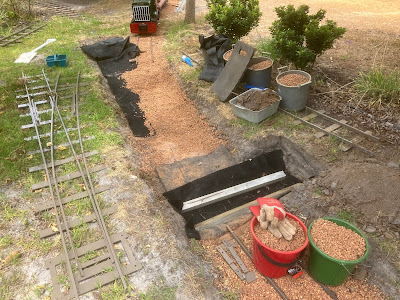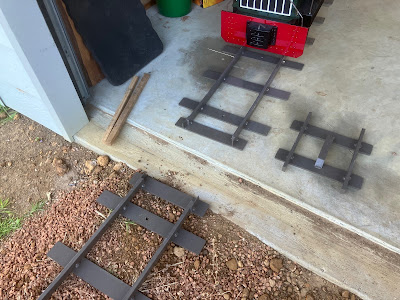Although I relocated an existing manual point lever for the new junction turnout, it proved awkward to operate as the track is in a shallow cutting and there are overhanging trees. A search on eBay revealed a reasonably priced linear actuator with 50 mm travel which came with a remote control receiver and 2 push-button keyfobs.
I devised a relatively simple spring mechanism to allow for the over-travel of the actuator, compared to the point blades which move about 25 mm. As currently configured, the springing is too firm to allow the points to be "trailed through", which was not my intention.
I installed the electronics together with a small 12 V sealed lead-acid battery in a plastic box beside the track. A small solar panel and charge controller (from Jaycar) keeps the battery topped up. The installation is off-grid so no long cables are required to feed power from elsewhere.
The remote control setup has worked very well so far.
 |
| Image courtesy of eBay. |
 |
| Design in Rhino for the spring mechanism. |



















